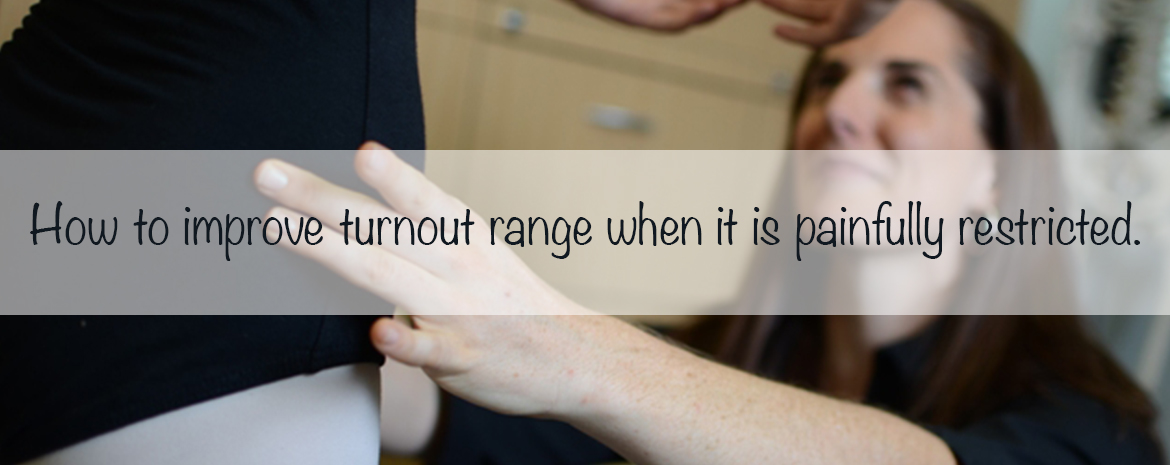The question that we answer this week is from a mother of a dancer struggling with turnout range due to a painful restriction. We see this all too often and I offer some suggestions on how to improve turnout in this situation.
Question:
I'm wondering if you could provide some advice to assist with my daughter as I have run out of options in tackling an issue?
My daughter is 14 and has been professionally trained in ballet since aged 4. Her pelvis/turnout is dreadful, most likely arising from her breech presentation at birth with her legs fully extended to her head.
I have tried to assist her for many years, as a qualified Bowen and massage therapist I can identify that her inguinal ligament is extremely tight but she won't let anyone touch it including me. Her ballet teacher confirms this is where the tension is that is restricting her ability to hold what turnout she has, and her pelvis is anteriorly rotated all the time.
She has just passed her Inter Foundation RAD exam with merit, but her scores have been dramatically reduced due to the turnout. To the point where I question the value in her continuing as she will struggle to keep up with her class having scored 20+ points less in the exam this year. Unfortunately my daughter has a very low pain threshold and any treatment on that pelvic area is met with total objection!
We live in country Victoria and I am hoping you can provide some sort of direction on what we can do to help her keep achieving in what she loves so much. Anything you could forward would be so greatly appreciated."
Answer:
I can sympathize! I did not have great hips at all and not knowing the mechanics around the hip can influence this a lot. It’s great that you have been working with her as a massage therapist. She’s very lucky to have that! This is an area that a lot of people do struggle with, so I hope that the following tips will help.
- What to do when you can’t treat the restricted area
When this is a very tight restricted area, young dancers can feel extremely vulnerable when having someone work on it. Some of the strategies that I use in the beginning if a student is defensive of this area is to use indirect fascial releases techniques that cross over that area. One thing that you might want to look into is Thomas Myers Anatomy Trains model. Start by looking for any fascial lines that pass along the restricted area. You may also like to try releases in other areas which can indirectly help the inguinal ligament. Sometimes I teach students to do it themselves by going in and gently applying pressure to the areas that needs to release through their own hand. If she can tolerate having her own hand in that area then you can begin by gently applying pressure through her fingers, then slowly start working on that in a progressive way. I have one student who was in a very similar situation. She had also been in her mother’s womb sitting with her legs straight up the front, in a V sit, for the final 3 months of the pregnancy. When I first started seeing her she wouldn’t even let me touch her skin and couldn’t tolerate any hands on treatment at all. Over a period of time and by teaching her how to do indirect releases, then doing direct releases through her hands and then finally with me doing it, she now loves the releases because it feels so much better. So do not be put off. It is often just a process of learning she needs to go through.
- Start work on other areas of restriction first
Try to assess the hips in a couple of different ranges of motion as this may give you different strategies for improving turnout. In my 3 day Teacher Training, which is also designed for therapists, we actually have a look at the pelvis and how the hip articulates in different ranges. We look at the working leg when it is in devant, a la seconde, in a plié and in standing. There are often different restrictions to each of those positions. If we try to focus on the worst restriction, that is usually met with the most objection. However if we look at all of the other positions, and start working on an area which isn’t so restricted, the student can get used to the process, and you working on that area, and this will usually lead to much greater improvements. One of our physios, Sally Harrison, has created a wonderful video about "Safe Stretches fro Tight Hips" that has been helping lots of our dancers and non-dancers alike! She offers 8 different variations of some Hip Mobilisers to gently loosen the soft tissues around the area without aggressive Over-stretching.

